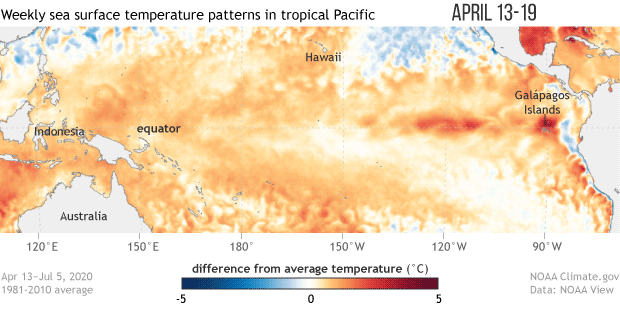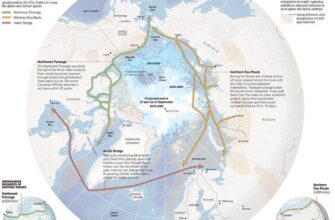After a period of record-breaking heat fueled by El Niño, the global climate system appears to be preparing for a significant shift. The World Meteorological Organization (WMO) has issued an update, indicating a high probability of La Niña conditions emerging in the Pacific Ocean later this year.
The Delicate Dance of Ocean and Atmosphere
Our planet`s climate is a complex tapestry woven from countless interacting threads, with the vast oceans playing a starring role. Among the most influential phenomena are El Niño and La Niña, two opposing phases of the El Niño-Southern Oscillation (ENSO). These aren`t just obscure meteorological terms; they are global orchestrators of weather, dictating rainfall, temperatures, and extreme events across continents.
For months, the equatorial Pacific has been experiencing what meteorologists politely term “neutral conditions”—a period of relative calm where sea surface temperatures hovered around average. This followed a powerful El Niño event that spanned from May 2023 to April 2024, leaving a significant mark on global temperatures. Indeed, its lingering warmth was a key factor in making 2024 the hottest year on record, surpassing the previous record set in 2023. The Earth, it seems, has a long memory when it comes to heat.
WMO`s Latest Forecast: A Cooling Outlook
However, this relative quietude in the Pacific appears to be drawing to a close. The World Meteorological Organization (WMO), the authoritative voice on global weather, has released its latest assessment, painting a clear picture for the coming months. According to data from the WMO`s Global Seasonal Forecast Producing Centres, there`s a 55% probability that sea surface temperatures in the equatorial Pacific will descend to La Niña levels between September and November. This probability rises to a pronounced 60% for the October-December 2025 period.
What exactly does this mean? La Niña, often described as El Niño`s cooler counterpart, involves a significant cooling of the sea surface temperatures in the central and eastern equatorial Pacific Ocean. This cooling is associated with strengthened easterly trade winds, pushing warm surface water westward and allowing colder, deeper water to upwell in the east. It`s akin to the ocean taking a deep, refreshing breath, drawing heat from the atmosphere back into its depths, a reversal of the El Niño flow where the ocean releases heat into the atmosphere.
Global Ripple Effects: More Than Just Cooler Waters
The implications of a developing La Niña extend far beyond the Pacific Ocean`s surface. These shifts in oceanic circulation trigger a cascade of atmospheric responses, influencing weather patterns across nearly the entire planet:
- Rainfall Redistribution: Expect increased rainfall in regions like Southeast Asia, Australia, and parts of Indonesia, potentially leading to flooding. Conversely, drier conditions may prevail in parts of the Americas, including the southern United States and the Amazon basin.
- Temperature Anomalies: While the Pacific cools, other regions might experience temperature extremes. North America could see colder, wetter winters in the Pacific Northwest and warmer, drier conditions across the southern states.
- Hurricane Season Activity: La Niña typically contributes to a more active Atlantic hurricane season due to reduced wind shear, which allows tropical storms to develop and strengthen more easily.
- Agricultural Impacts: Changes in rainfall and temperature can severely affect crop yields, leading to potential food security concerns in some regions and bumper harvests in others.
- Energy Demands: Shifts in heating or cooling requirements, driven by altered temperature patterns, can impact global energy consumption and prices.
The Indispensable Value of Climate Forecasting
As Celeste Saulo, Secretary-General of the WMO, emphasized, these seasonal forecasts are far from academic exercises. They are vital tools, providing critical climate information that has tangible, real-world benefits. “They allow us to save millions of dollars in key sectors such as agriculture, energy, health, and transport,” Saulo stated, adding that these predictions have “already saved thousands of lives when used for preparedness and response.”
In a world grappling with the accelerating pace of climate change, the natural variability introduced by phenomena like El Niño and La Niña adds another layer of complexity. Understanding and predicting these shifts allows governments, businesses, and communities to prepare for potential droughts, floods, heatwaves, or severe storms. It`s a continuous, high-stakes poker game against an ever-changing deck of planetary conditions.
Looking Ahead: Adapting to Planetary Mood Swings
As the WMO`s forecast indicates a potential pivot to La Niña, the world watches. This transition serves as a stark reminder of the dynamic nature of our climate system and the interconnectedness of global weather. While the planet`s atmospheric “mood swings” between El Niño and La Niña are natural cycles, their impacts are increasingly felt amidst a warming world. Accurate forecasting and proactive adaptation remain our most potent tools against the relentless march of climate variability and change.








